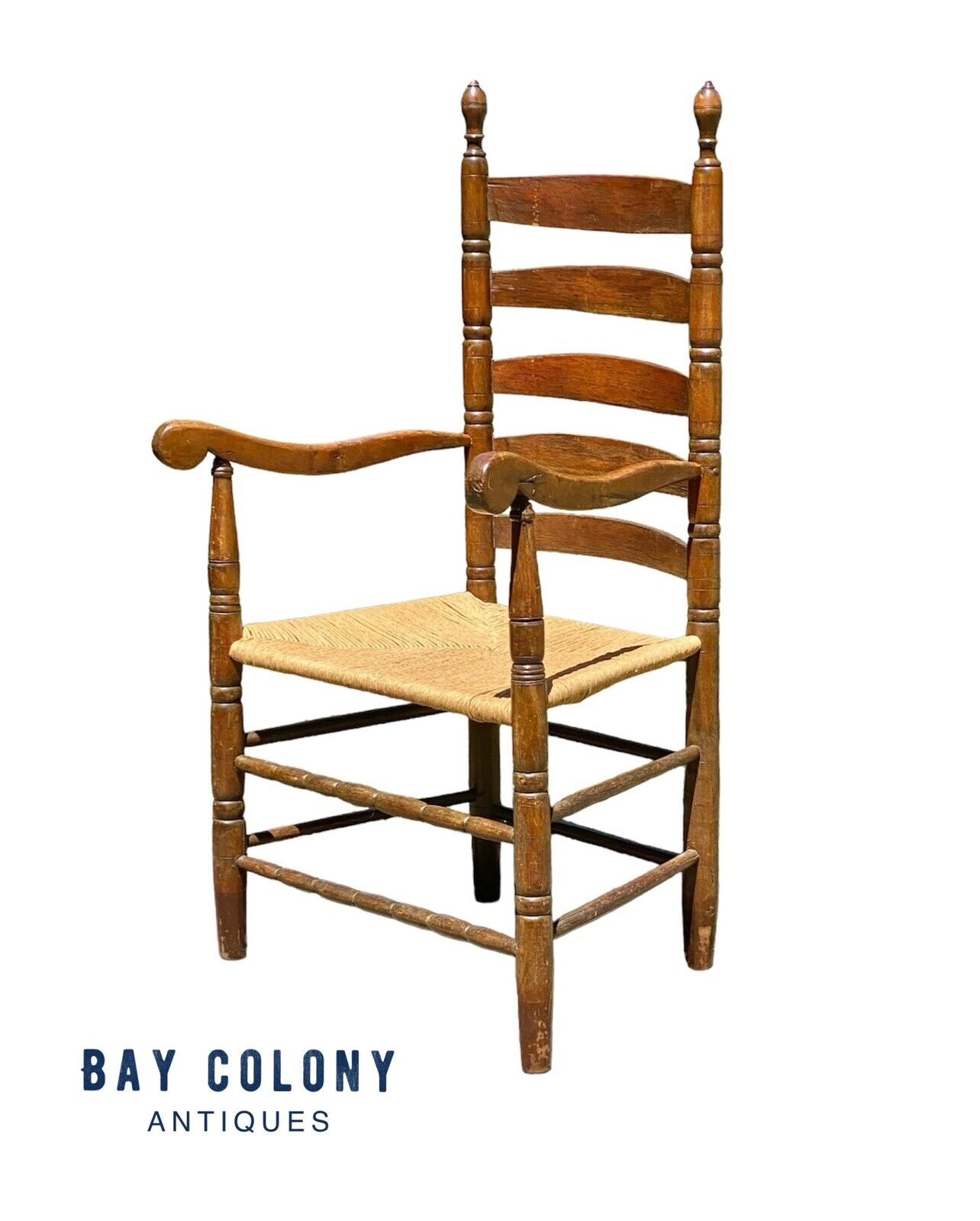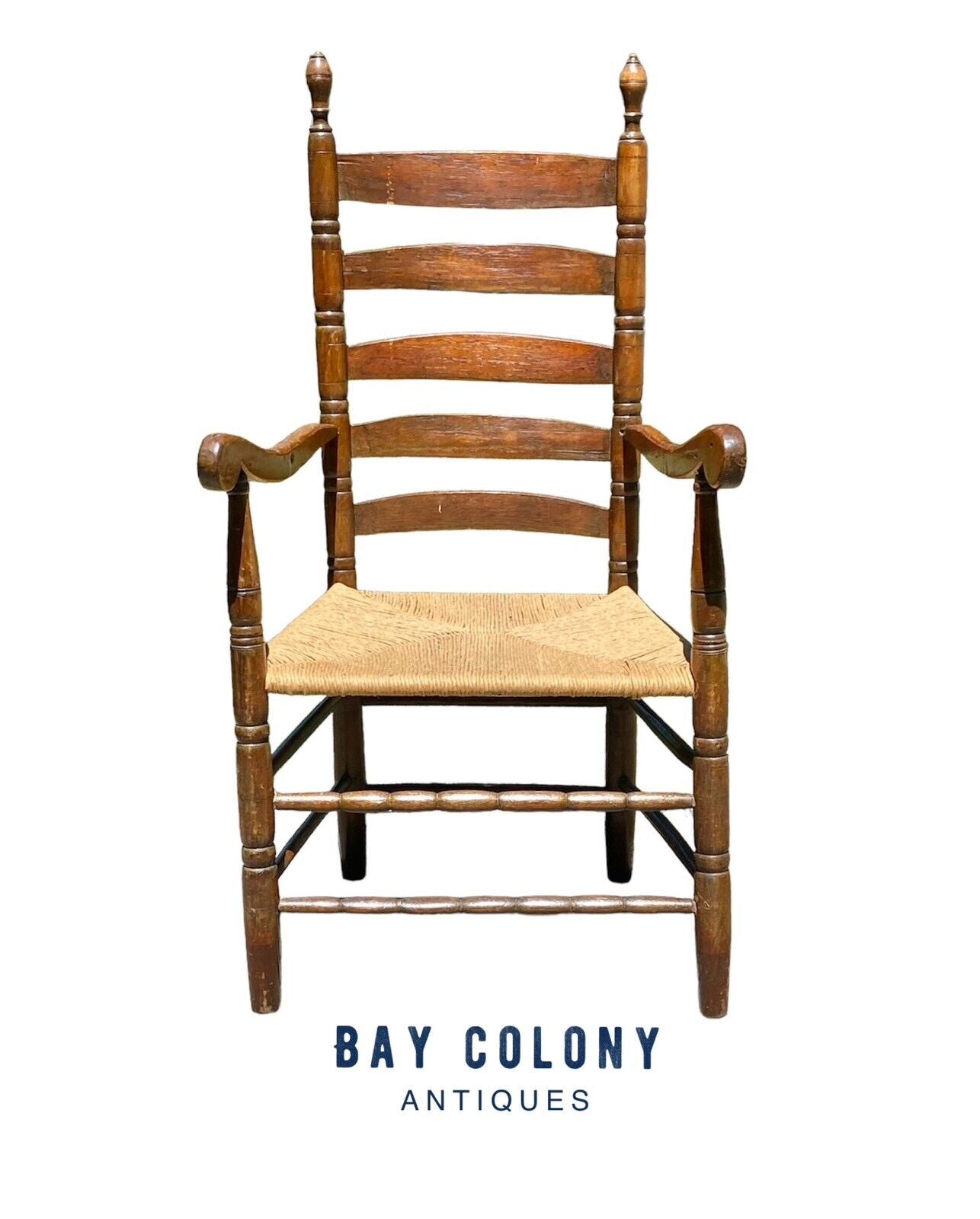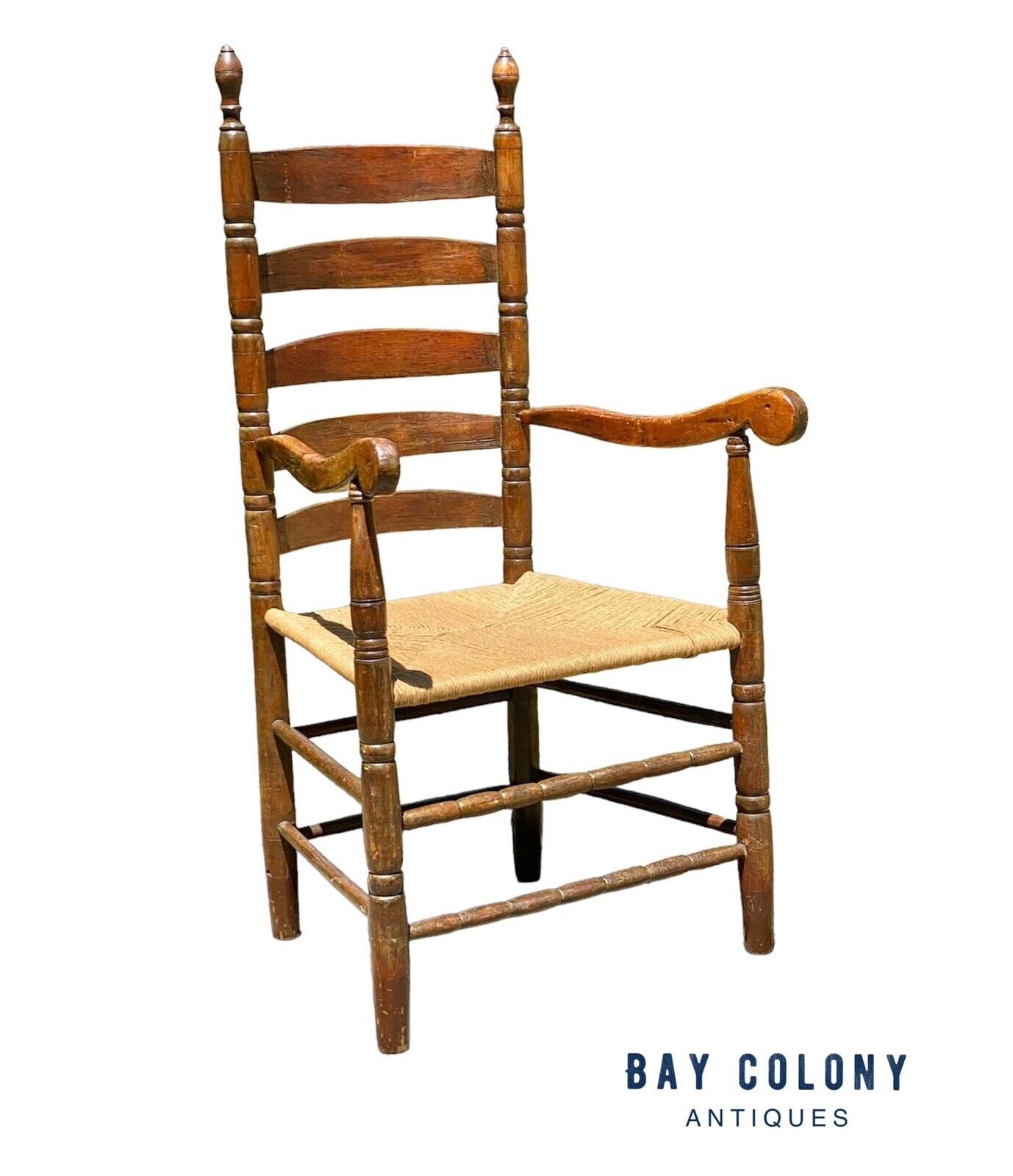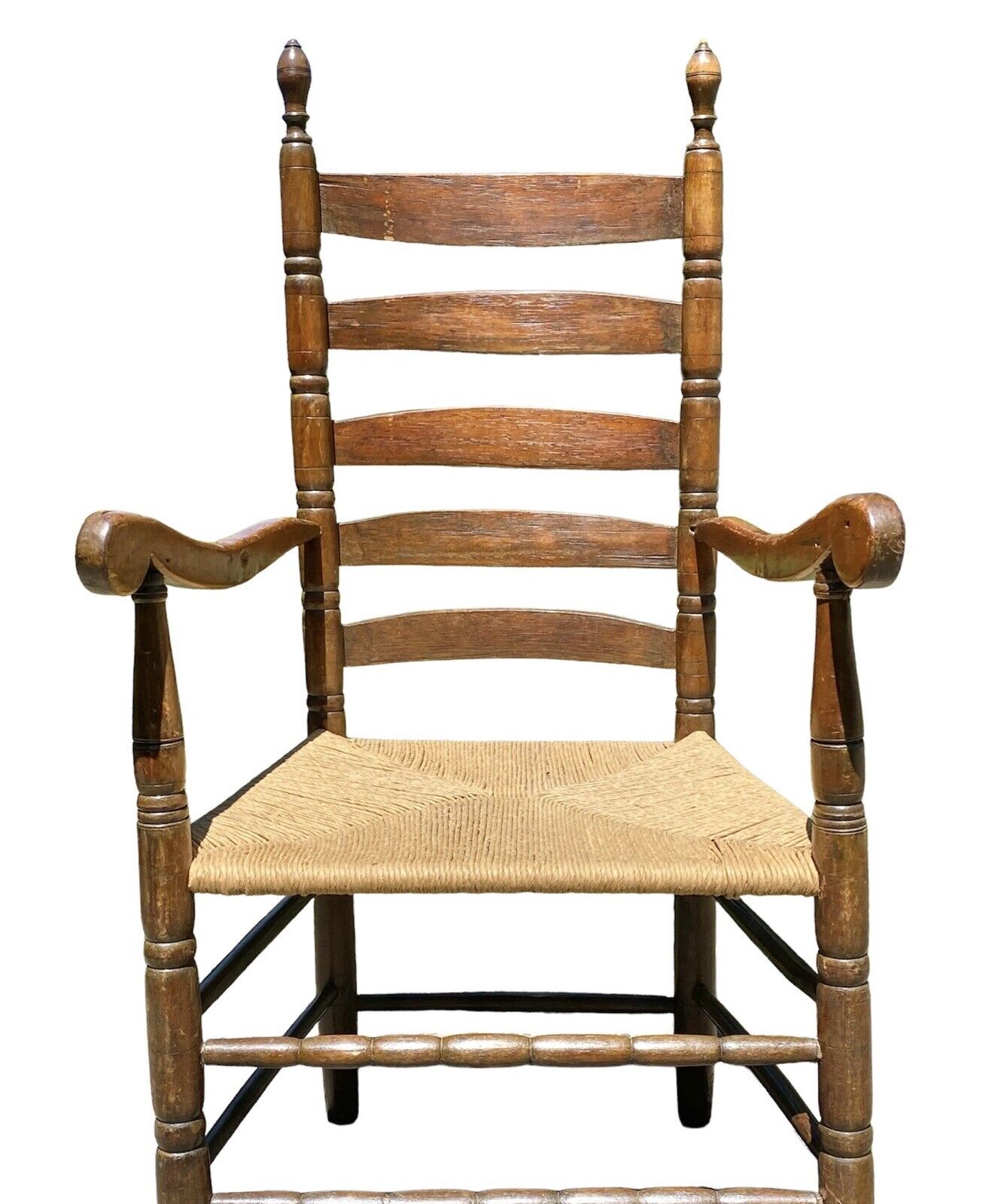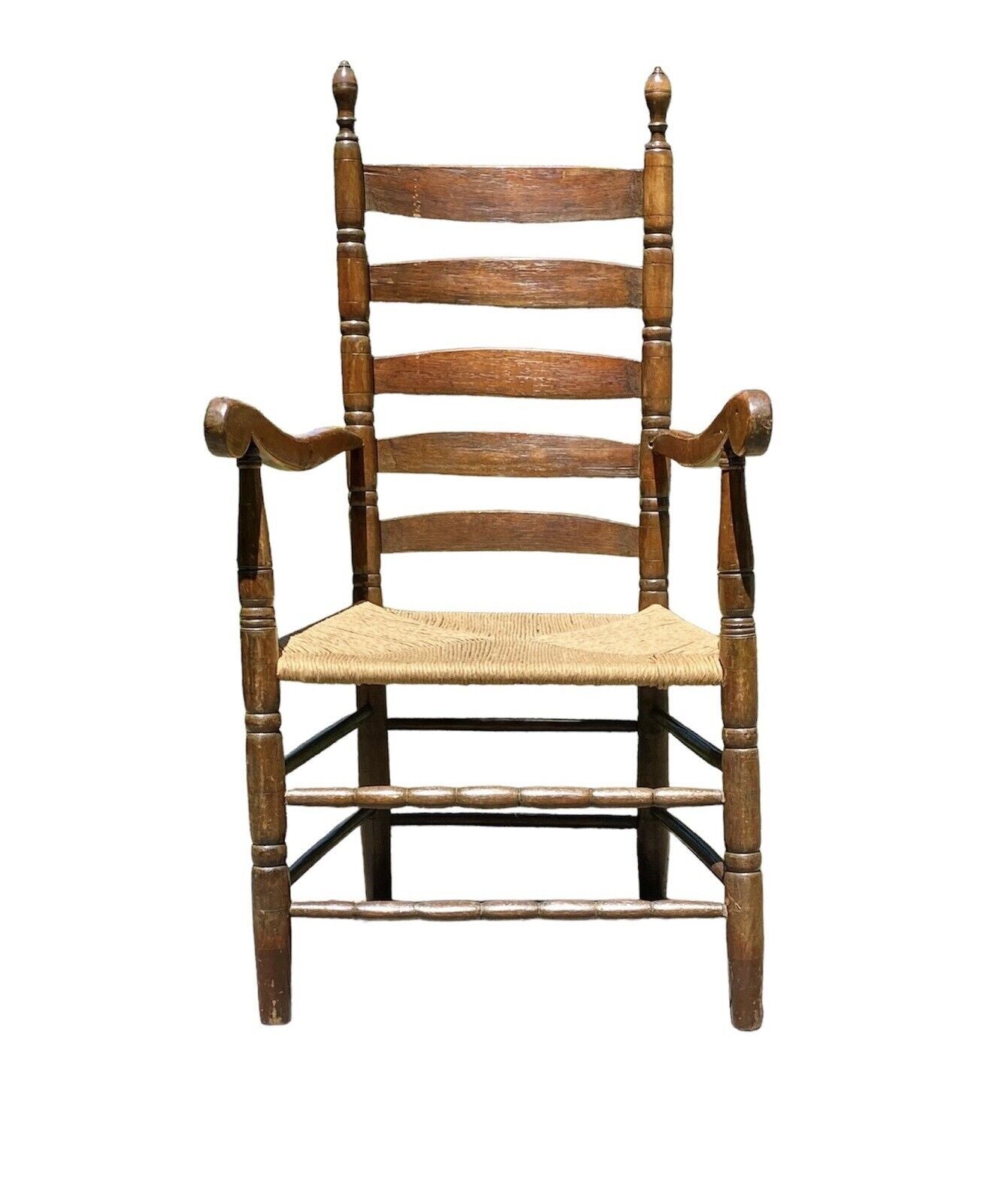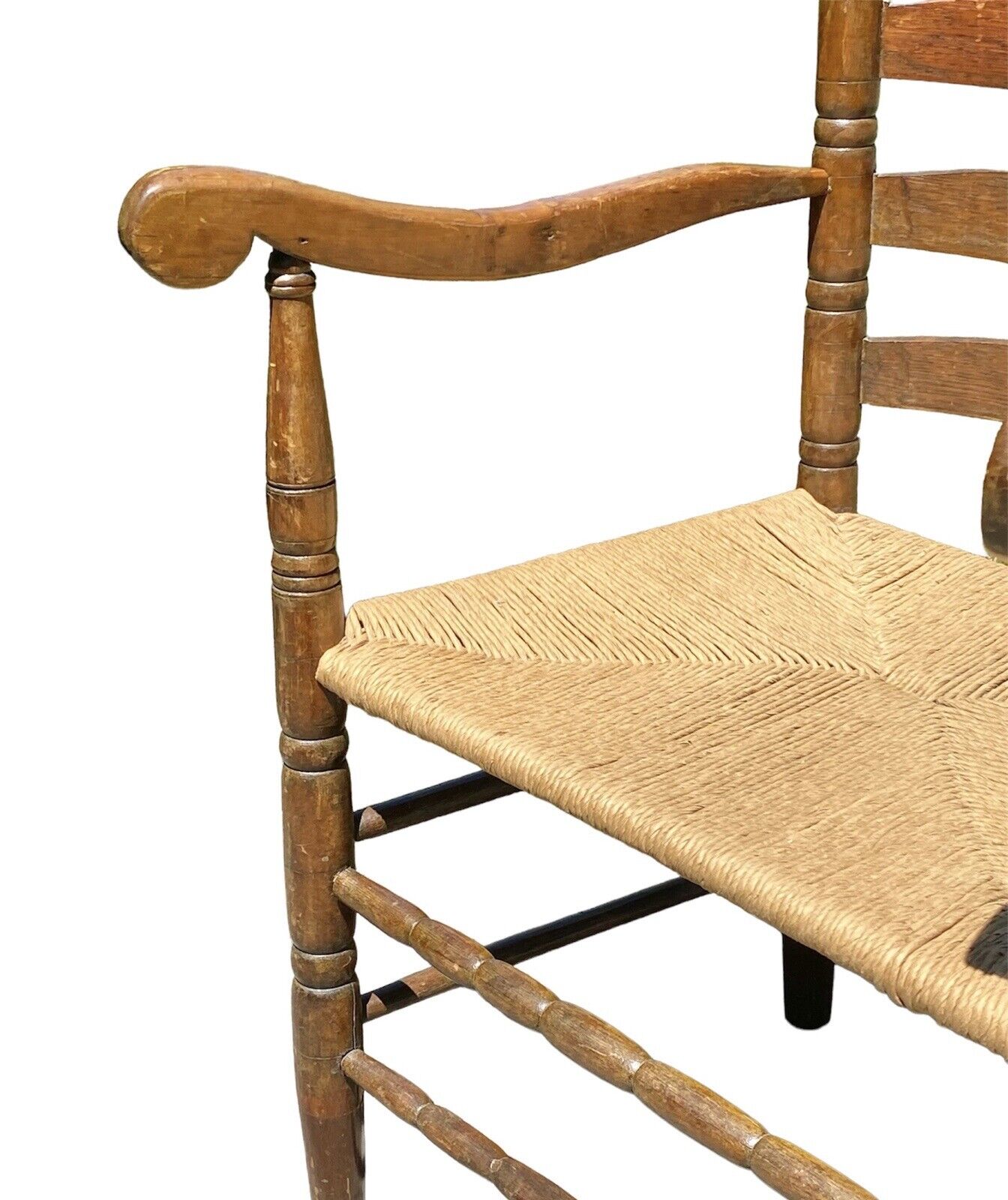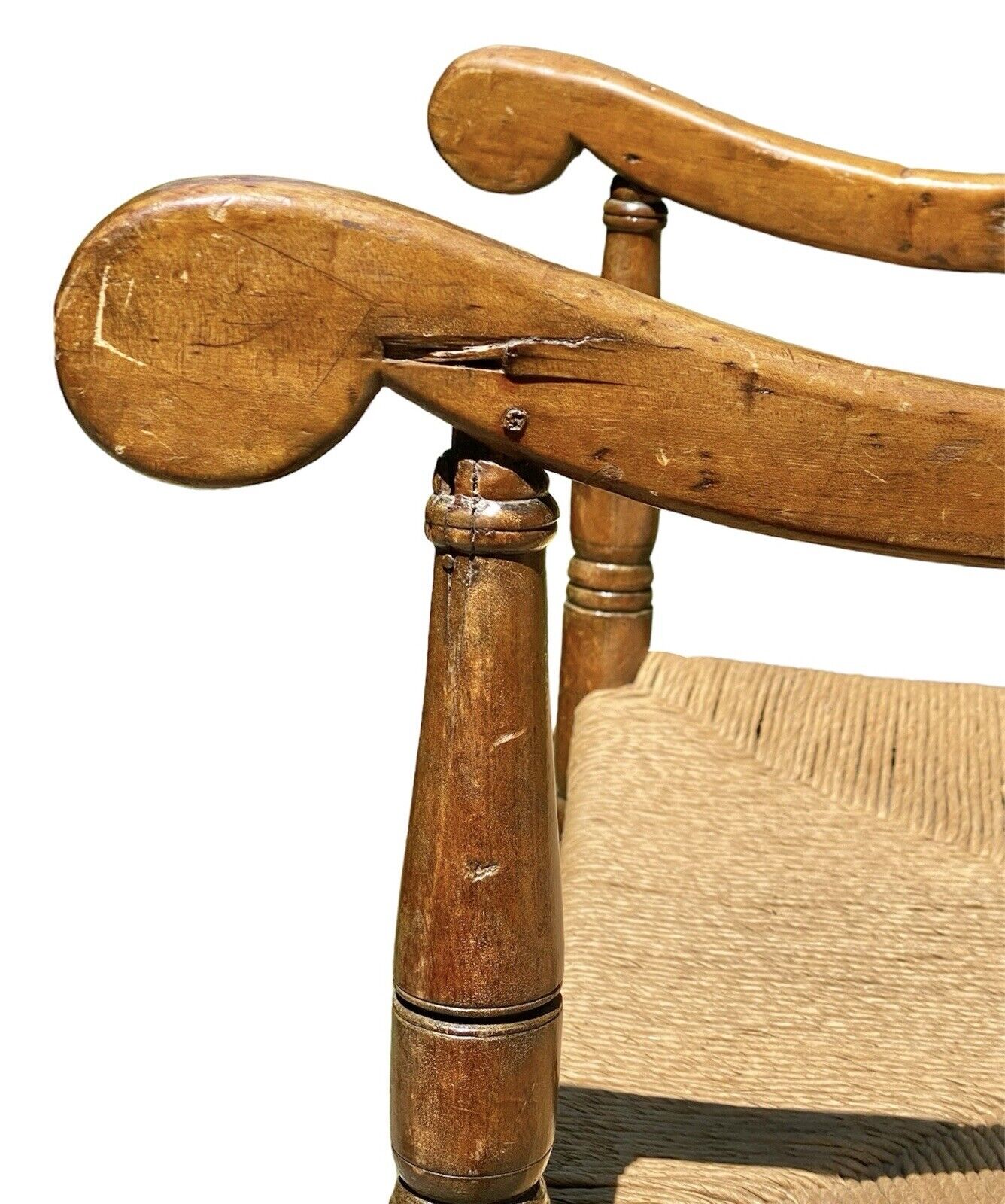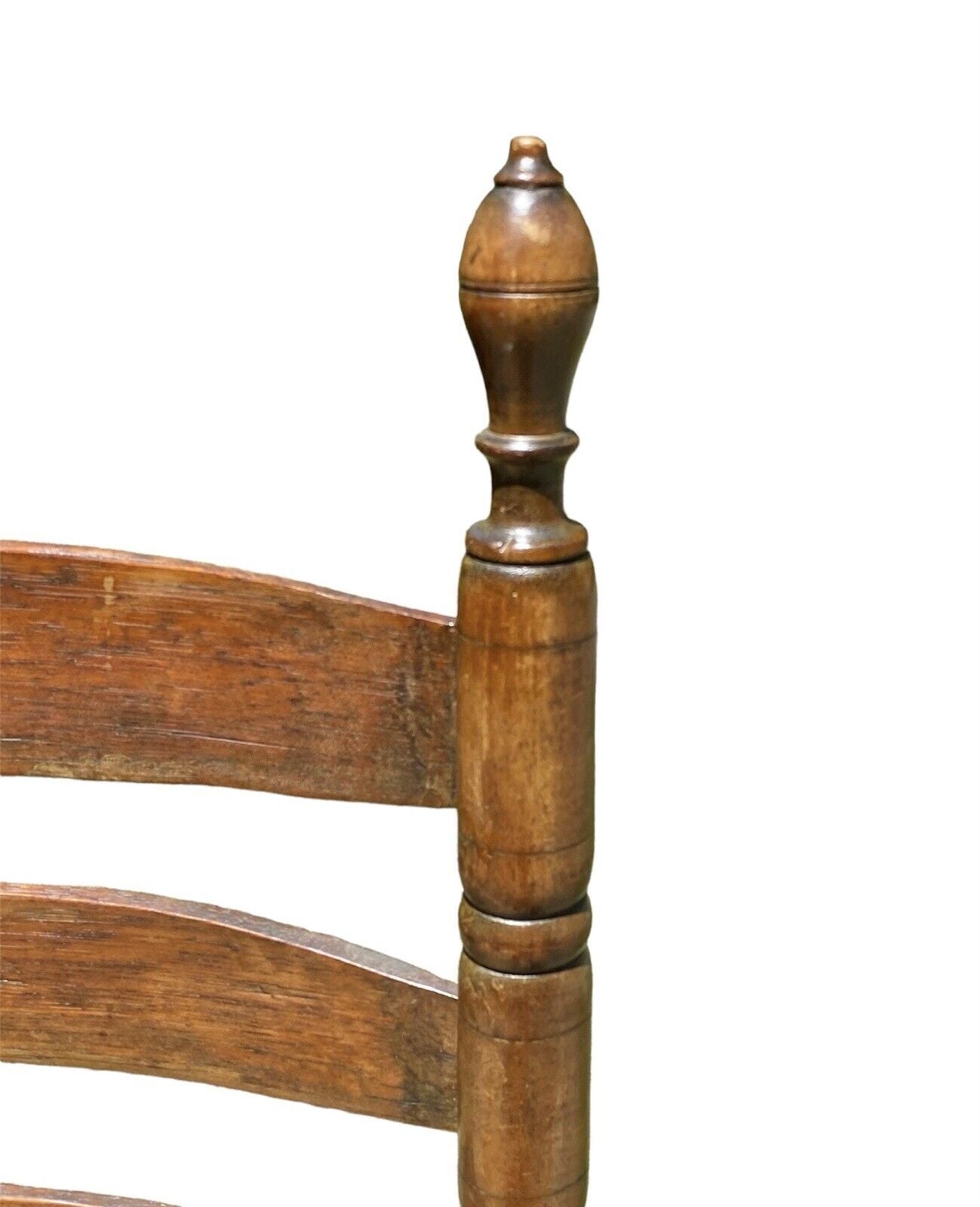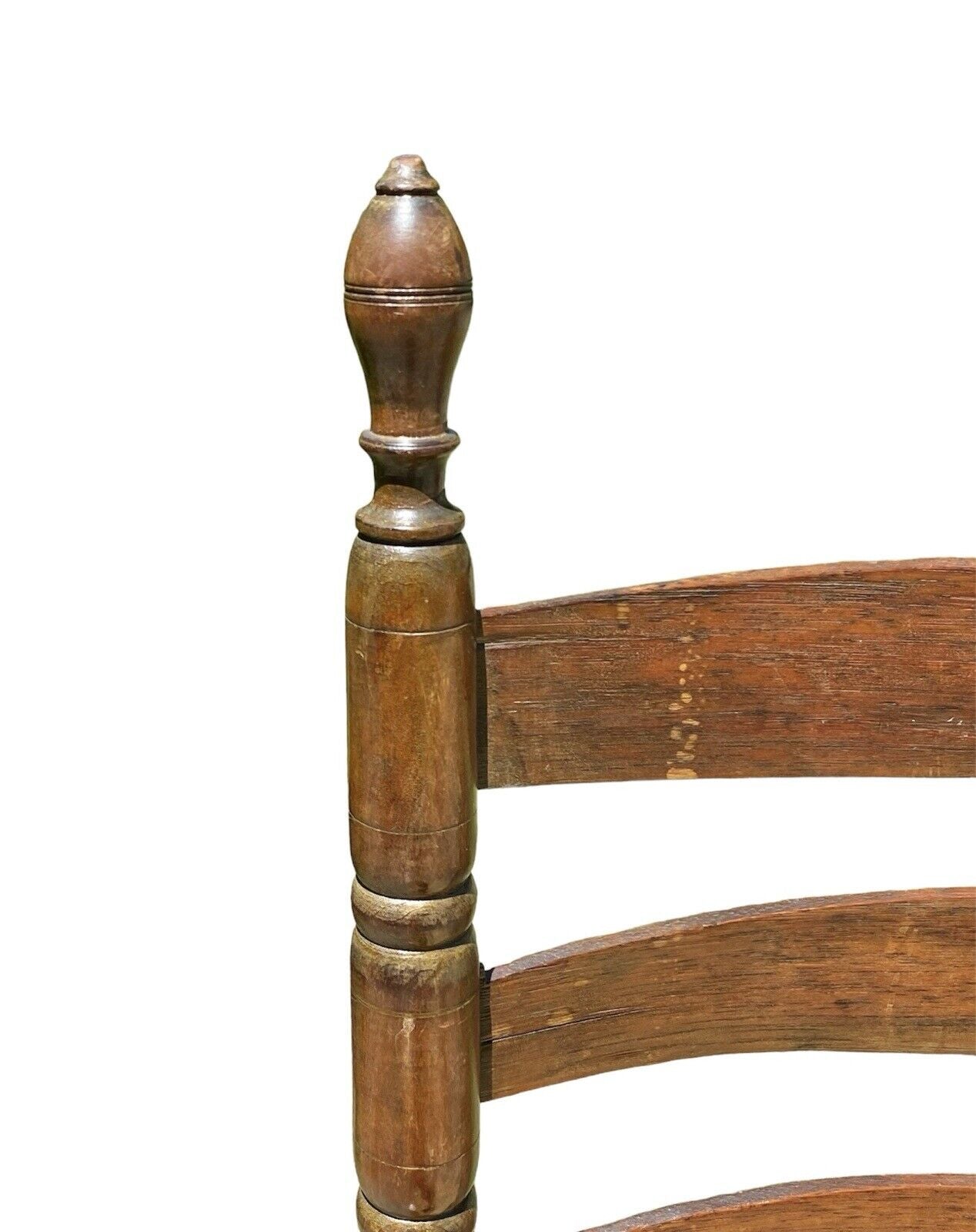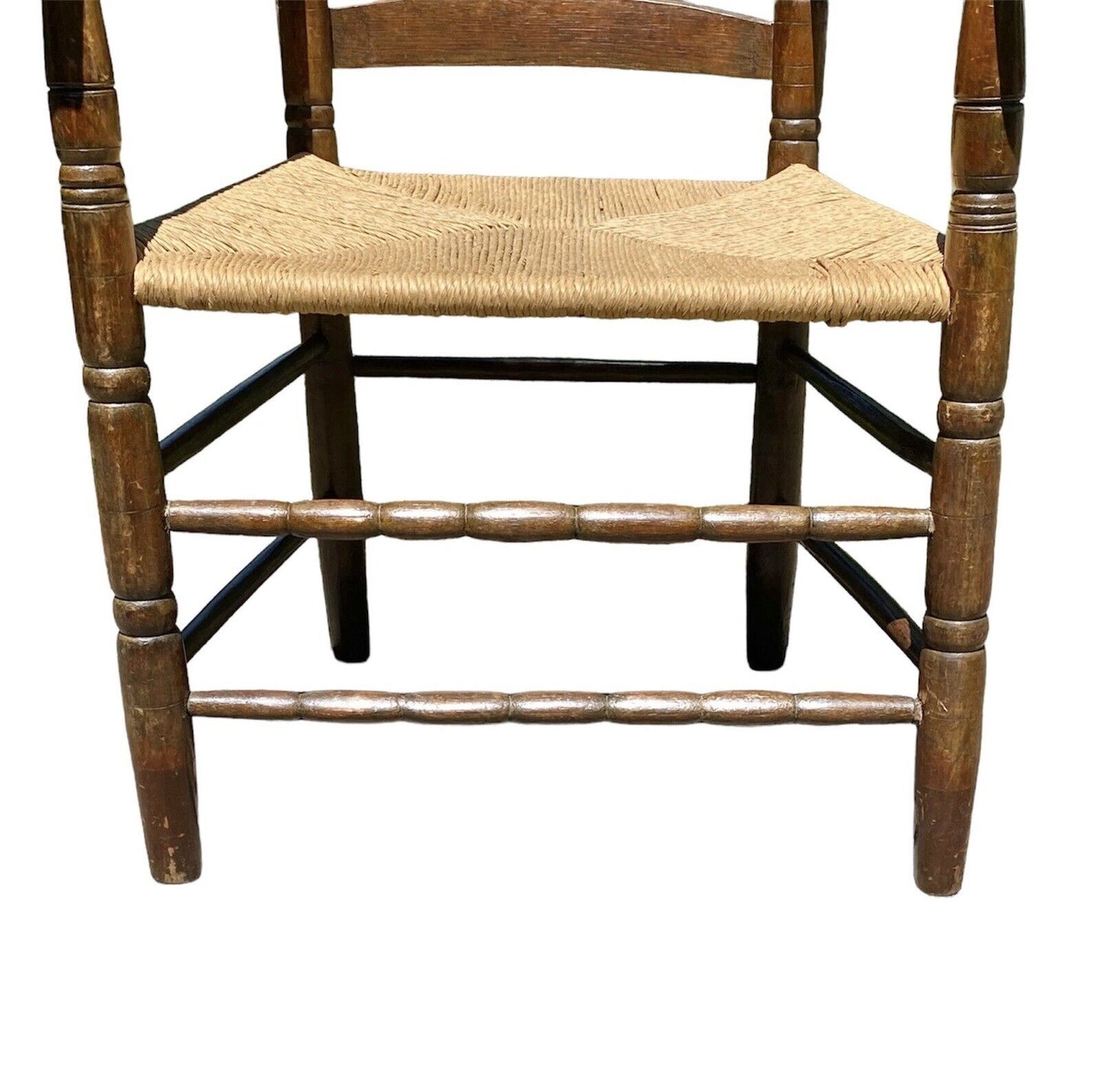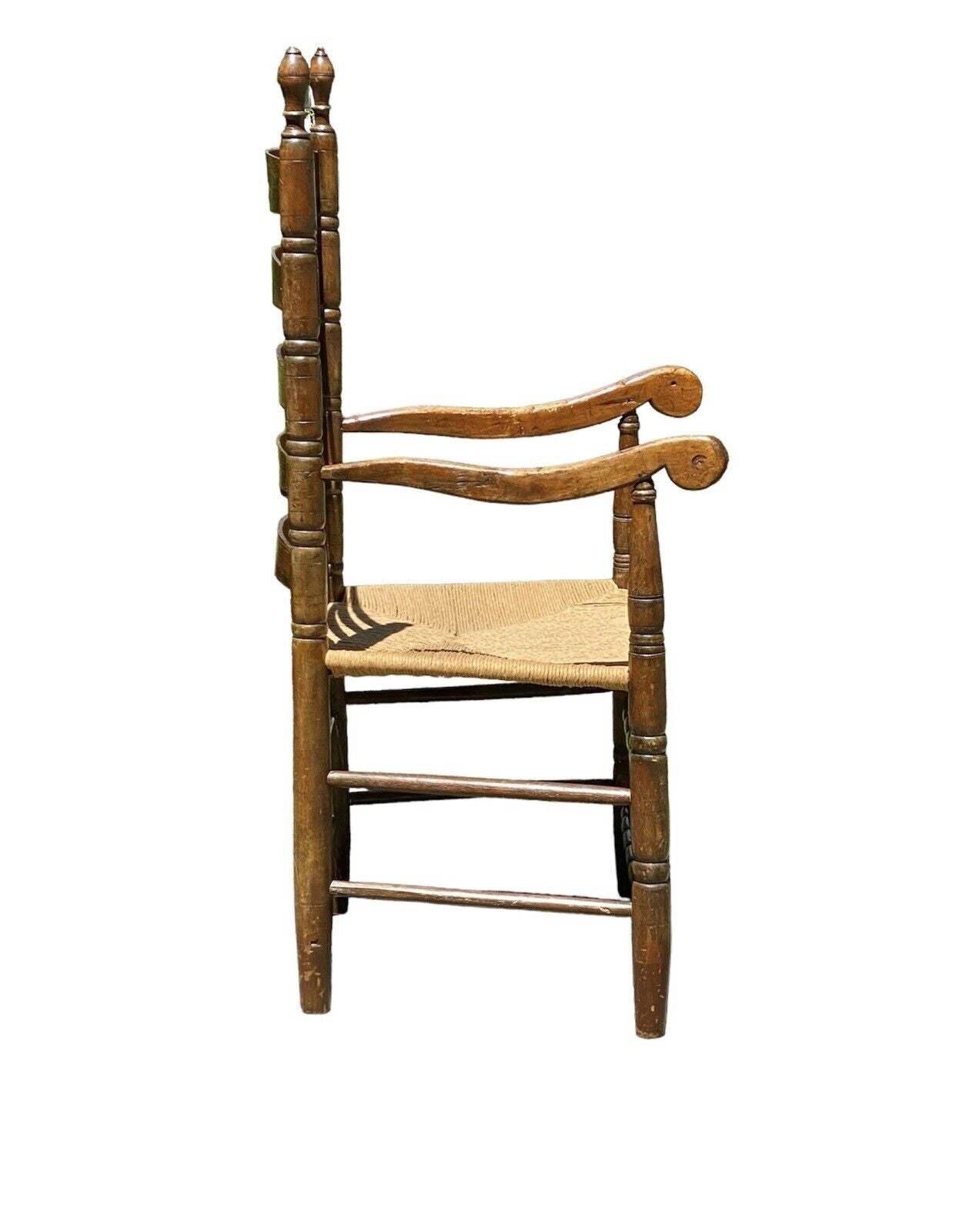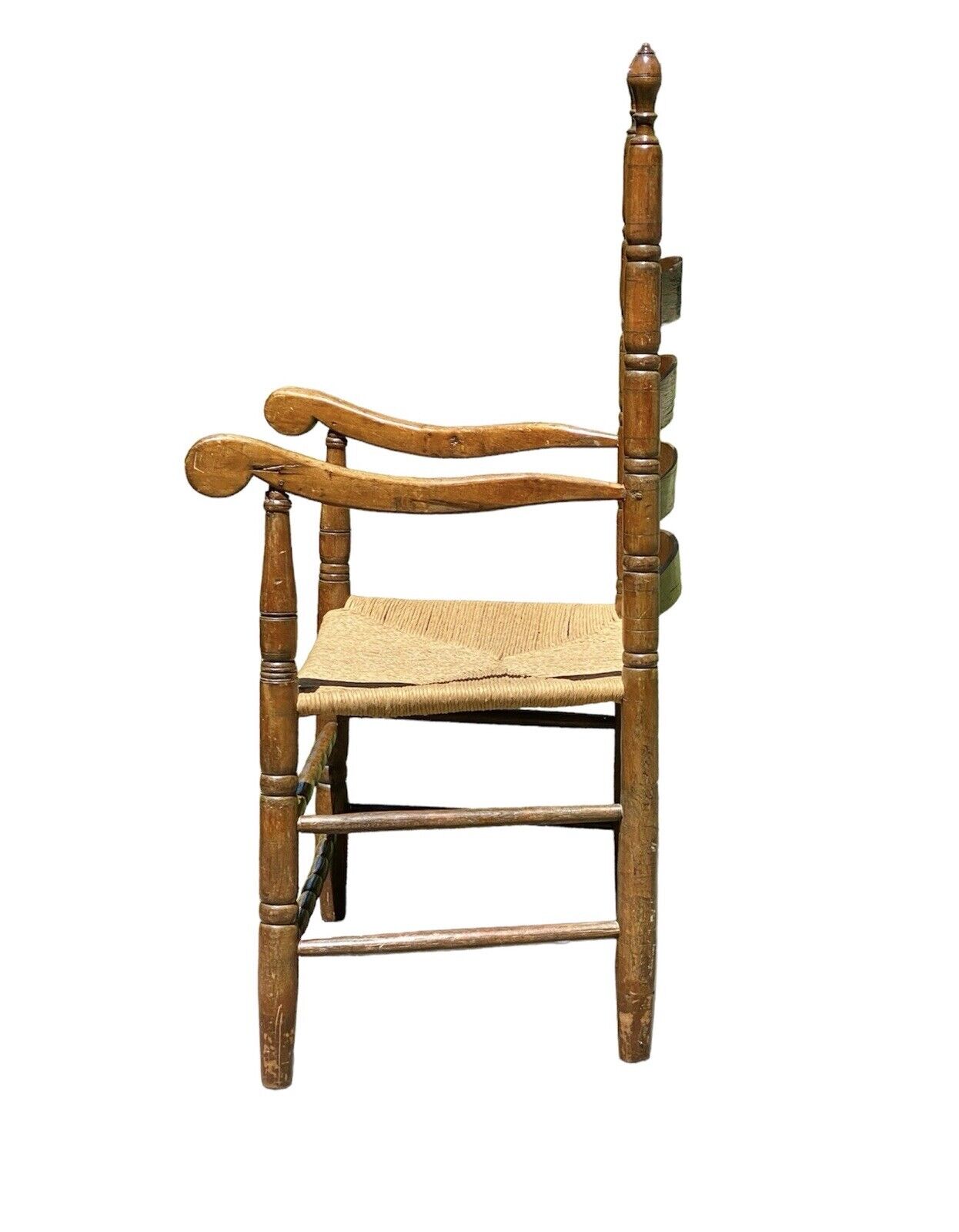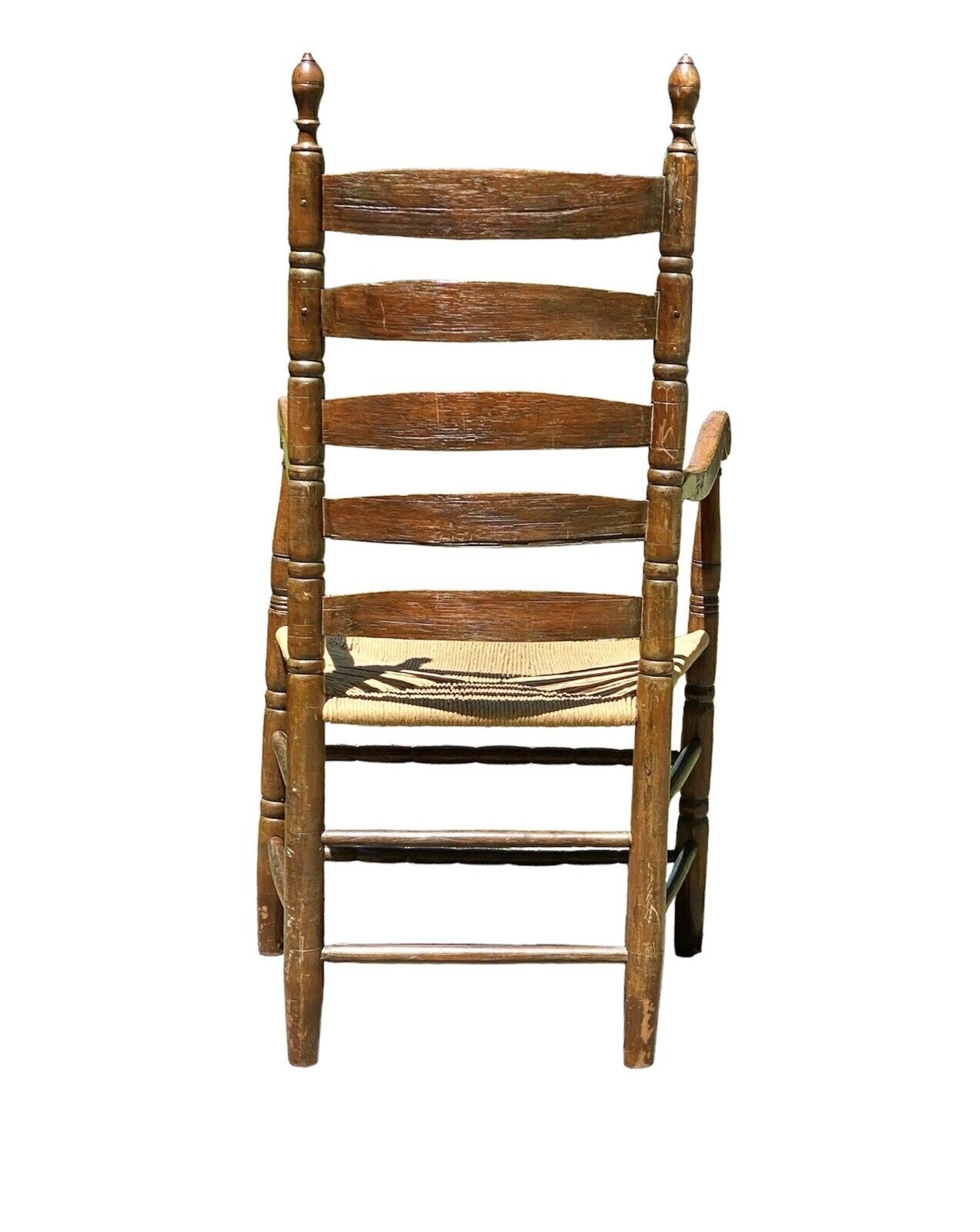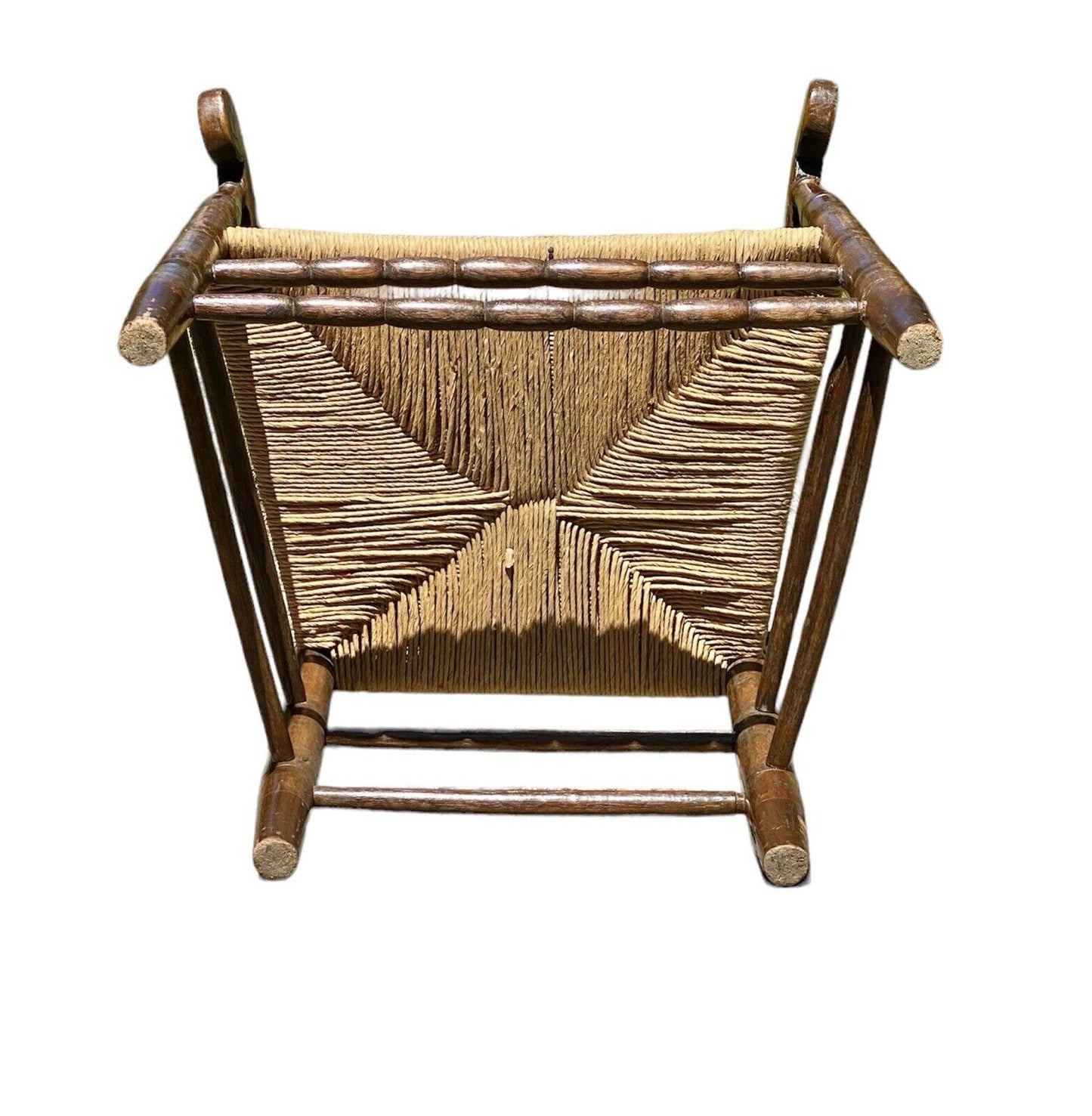Antique
Early Queen Anne Period Walnut & Oak Ladderback Great Chair With Ram's Head Arms
Early Queen Anne Period Walnut & Oak Ladderback Great Chair With Ram's Head Arms
Couldn't load pickup availability
With our absolute highest compliments Bay Colony Antiques takes the utmost pleasure in offering this remarkable antique armchair. We have been privileged to have handled antiques which date to the first half of the 17th century until the modern era and always we find our first love to be the early forms of furniture bestowed to us from the American colonial era. At this moment in history craftsmanship was both evolving and reaching a zenith with trained artisans working in mediums across the spectrum of the arts for the betterment of society as a whole. Whether we are studying early iron from the first American forges, or whimsical objects made to keep children entertained, our passion for the early periods of the colonial America and those relics passed down through time for our safekeeping is boundless. With respect to the current offering of this exceptional early American great chair we hope that someone who shares our enthusiasm for this early period will choose to make a permanent home for this remarkable antique in their treasured collection.
The presence of well-formed lobed finials at the top of each post indicates that a craftsman with a superior skillset had a hand in forming this chair. Each of the four chair uprights feature bead and sausage pattern turnings and the front uprights additionally have baluster formed turnings where the uprights meet the arms. The double stretcher supports across the front also have the same sausage turnings which were a hallmark of early Eastern and Coastal New England design. The chair employs ram's head style arms that are curved and contoured for a reasonable amount of comfort. The back of the chair is constructed with well-formed curved and arched supports in the ladderback configuration. Double stretcher supports span the entire chair frame ensuring that the chair has remained strong and reliable over two and a half centuries later. An experienced weaver provided this chair with a wonderful rush seat at some recent point in time. The bottoms of the chair legs were maintained and added to in length presumably so that the chair could be sat in without causing discomfort. Quite often this is the case as chairs were lowered throughout time for a variety of reasons but most commonly related to floors and wooden surfaces being relentlessly scrubbed in periods of outbreaks of disease. We believe the chair to be comprised of primarily walnut with maple selected for the arms and oak or ash used for the stretchers and back supports. The chair measures 24 1/2" wide x 23" deep (including the curve of the slats) x 46 3/4" tall with a 17 1/2" seat height.
Share
